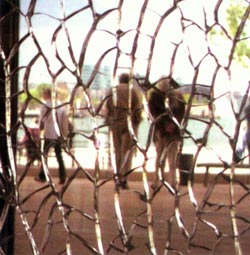
Riccardo Dillon Wanke deals with the fabric of minimalist improvisation, classical composition, and folk balladry on Caves. His playing with them is intellectually tough, shattering conventional changes, while using one eye to artfully manage the debris, and saving the other to remain highly susceptible to possible permutations as he gauges the sounds around him.
These different dimensions are from the beginning located in one and the same compositional space, and they are generally revealed for their surprisingly complementary aspects. The lucid, rigid control and sense of equilibrium of this aural space is feed by an antipathy and conflict among the elements, which tag each other like thorns, get in amongst each other like bracken, not to paralyze the proceedings, but to corrugate its skin the better to sink beneath it, and so further extend their movement into more oblique dimensions. The evolution is thus alert and unforced, and each phase feels part of a developing argument.
Rather than technique or spontaneous self-expression, its the sonic relationships that put forward those arguments on "E" and several others like it. Clotted circular structures of acoustic playing, deadpan and untutored, slowly bleed into sustained purring multiphonics. During dead moments such this, Wanke remains immobile and unobtrusive, silently counting time while awaiting the next natural point of entry into the music. This occurs some five minutes later, at the nine minute mark, when breathy fluttering phantom notes weave beneath an elaborate mesh of resonant echoes, high-frequency canopies and metallic micro-rhythms in the undergrowth.
Where these works exhibit classical formality in their highly regulated and robust treatment of a series of events, as the performance progresses, Wanke embraces increasing extremes of texture and stylistic reference points - chromaticism extends beyond its tipping point, dissolving into clusters, multiphonics are elongated into torrential arpeggio's, and thick amplifier distortion and vibrating pools verge on volatility before they soften and spawn subtle half-melodies. The pieces so arranged achieve full statements, making their points without overindulgence, remaining clear and concise while making certain commitments to risk. It's apparent throughout just how beautifully made and directly affecting these pieces are, and what a significant contribution Caves makes to experimental music of a minimalist bent.
Comments and Feedback:



More Recent Reviews, Articles, and Interviews @ The Squid's Ear...


|

